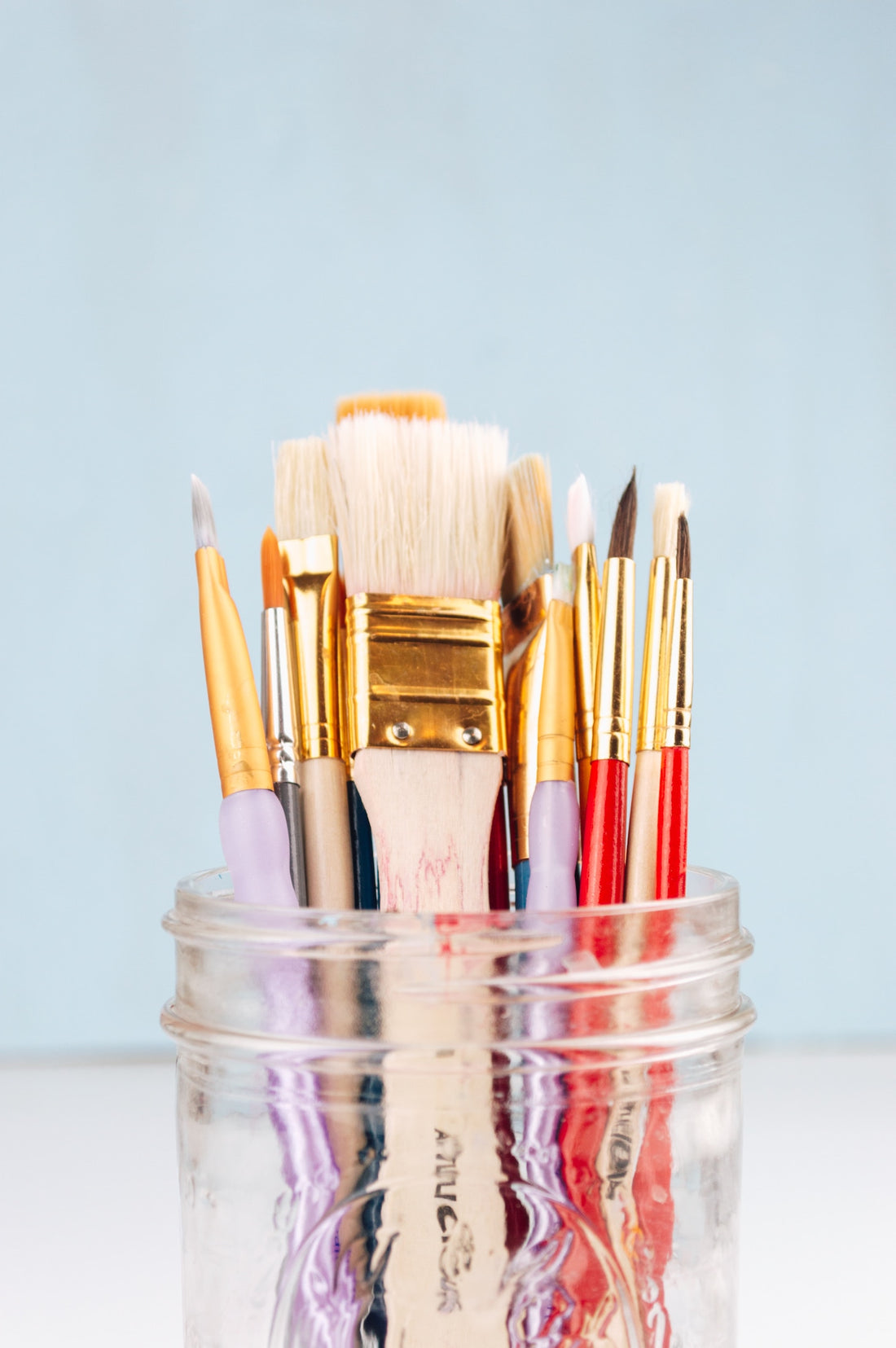
Brush Up Your Skills: Understanding the Different Types of Acrylic Paintbrushes
Share
Acrylic paint is a versatile medium that can be used on a variety of surfaces, including canvas, paper, wood, and even fabric. You've even seen me paint glass, old tin, gourds, ice skates, canvas sneakers, soooo think outside the box when painting!

To get the most out of your acrylic painting experience, it's essential to have the right tools, including the right paint brushes. In this post, we'll discuss the different types of paint brushes for acrylic painting and which ones are best suited for different techniques and effects.

Round Brushes: Round brushes have a pointed tip and are great for creating detailed lines, curves, and intricate details. They are available in a range of sizes and can be used for everything from sketching to filling in small areas.
Filbert Brushes: Filbert brushes are oval-shaped with a flat tip and are ideal for blending and creating smooth, rounded edges. They can be used for both fine details and broader strokes and are a great choice for painting foliage or fur. I use my filberts when painting flower petals, especially when I am using a one stroke method.
Fan Brushes: Fan brushes have a flat, fan-shaped tip and are perfect for creating a range of effects, including blending, feathering, and texture. They are also great for painting clouds, foliage, and hair. I especially love them when they're a bit scraggly. As well as any old abused brushes because they are also great for texture and foliage.
Mop Brushes: Mop brushes have a large, rounded tip and are ideal for creating soft, blended effects. They can be used for applying washes and glazes, as well as for creating textured backgrounds.
Angled Brushes: Angled brushes have a flat, angled tip that allows for controlled strokes and precise lines. They are great for painting geometric shapes and details and are also useful for blending and creating texture.
Detail Brushes: Detail brushes are small, fine brushes that are perfect for creating intricate details and precise lines. They are great for painting small areas, adding highlights, and creating texture.
Liner Brushes: Liner Brushes are great for nice long strokes. I add water to my paint for a more ink line consistency when using my liner and detail brushes. With a nice loaded brush you can achieve long strokes without having to reload your brush as frequently. Great for painting vein lines on leaves, branches, etc.

When you're starting out it's not necessary to have all the brushes in all the sizes. I would recommend a few flats, a few rounds, a liner and a detail brush. I use the synthetic lower priced ones. If you take care of them and not leave them sitting with paint on them they will last quite awhile.
After you get started and want to add some additional brushes I would add a fan and a few filberts. I myself don't use mop or angled brushes but you might want to experiment at some point to find what brushes work for you.
I do use hog bristle filberts quite often for painting on canvas. These are the long handled brushes you'll find in the fine art section when buying supplies. Why I like these is the sturdier bristles that dig into the nooks and crannies of the canvas.
With the right brushes and techniques, you can take your acrylic painting to the next level and create stunning works of art.
I hope you find this helpful! Any questions just reach out :-)
I’d love it if you joined me over on in my private Tinker's Cart Art group. I have short tutorials and the community is very helpful and supportive! https://tinker-s-cart-art.mn.co/share/TshG85bTF-3iqbaZ?flow=facebook&utm_source=manual
Happy Painting!
Cheryl

